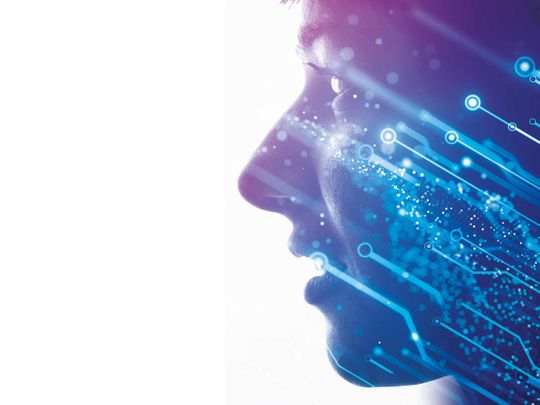
Some argue technology has done more to harm humanity than help it. Yet it is undeniable that, if leveraged correctly, tech has the ability to positively influence society and support our development.
We must find ways to harness this ever-changing frontier to promote a future well-being in a world where non-complex and routine tasks will be increasingly automated. This is a vision in which human flourishing will be supported, rather than diminished, by rapidly evolving technology. Success will lie in designing systems that at a fundamental level nurture the basic well-being of those who operate within it.
One paradigm that addresses this scenario is “positive technology”, which is a scientific and applied approach to the use of technology for improving the quality of our personal experience. This new field combines the objectives of positive psychology with enhancements in information and communication technologies by focusing on three key variables — emotional quality, engagement/self-actualisation and connectedness.
Positive technologies include tools designed to manipulate the quality of experience through its structuring, augmentation and/or replacement, with the goal of increasing wellness, and generating strength and resilience in individuals, organisations, and society.
So what then are the foundations of well-being around which we must focus our efforts? The founder of positive psychology, Martin Seligman, introduced the widely referenced PERMA model, which points to five specific elements that can help people reach a life of fulfilment, happiness, meaning, and, ultimately, well-being.
P: Positive emotion — Feeling good, optimism, pleasure and enjoyment.
E: Engagement — Fulfilling work, interesting hobbies.
R: Relationships — Social connections, intimacy, emotional and physical interaction.
M: Meaning — Finding meaning in life.
A: Accomplishments — Ambition, realistic goals.
The model is applied by helping individuals adopt a positive attitude as often as they can, supporting them to find the things that make them happy and engaged, making time to focus on relationships and find meaningful ways to connect with others. It seeks to empower individuals in a life led with purpose. It seeks to celebrate their accomplishments and encourage them to strive for further achievements.
And, no matter how digital or automated we become as a society, it is widely agreed that the fundamentals of human well-being will remain unchanged. Indeed, nurturing them will be more challenging and relevant than ever.
How can we harness technology to actually promote future well-being rather than erode it, as we are being continually warned? The workplace is an excellent example. When correctly applied, technology can pave the way for an improved organisational workflow, which in turn leads to greater job autonomy and better opportunities for collaboration.
Stronger workplace relationships built through an environment of collaboration lead to a greater sense of involvement. Tech innovations that allow for flexible work hours and remote work lead to a greater work-life balance. Examples of such technologies that serve to enhance organisational workflow include elevators that can access your calendar and take you to the correct floor without needing to press any buttons; virtual holographic meetings that start without prompting and seamlessly follow you to other locations; and AI monitors that warn employees when they are spending too much time at work on personal social media or other non-work related tasks.
The power of technology to promote collaboration is aptly showcased in the case of PwC in Paris, where they have experienced how a collaborative workspace can prove its worth. Last year, PwC created an ideation war room called ‘The Delta Room’, integrating a large-scale immersive visual collaboration solution, to facilitate complex customer meetings and drive quick decision making.
Within months of its realisation, massive new projects were rewarded on the heels of Delta Room customer engagements, thus delivering on the promise that technology can support an increase in productivity and deliver a return on investment.
On the ergonomics front, this promotes a holistic, human-centred approach to work systems design that considers physical, cognitive, social, organisational, environmental and other relevant factors. It encompasses anything from posture to desk height, to workplace temperature and lighting.
The negative outcomes of poor ergonomics include both human and system-related errors, loss of productivity, low quality, accidents, injuries, physiological stresses and undesirable behavioural outcomes such as job dissatisfaction, stress and discomfort. The positive outcomes of well-integrated workplace ergonomics include such measures as work productivity, performance times, product quality and desirable behavioural outcomes, such as job satisfaction, employee morale, human well-being, commitment, etc.
Looking to the ergonomics of the future, we can expect to see the introduction of workplace technologies such as touchless gesture control devices. Gadgets that let you control what’s happening on a screen without any physical contact; chairs with smart sensors that adjust to our bodies for optimum posture; and air temperature and lighting that react optimally according to the levels of office traffic, or the time of day.
Workplace ergonomics will also serve as a steady reminder of a company’s commitment to its employees’ health and safety. This brings about a ripple effect of benefits beyond employee well-being, which goes as far as to lower attrition rates driving positive business outcomes. According to a report by Osha, $1 of every $3 spent on workers’ compensation stems from insufficient ergonomic protection.
This presents a huge opportunity in savings for companies. All in all, innovative ergonomics can lead to greater comfort and occupational health outcomes.
Ultimately, environments focused on meaningfully supporting employees to realise each of the well-being pillars can facilitate a lasting impact on overall well-being, and reap the knock-on rewards of increased company productivity, competitive advantage, and long-term economic outcomes.
Aaditya Tangri is co-founder and CEO of Kalebr Americas.












